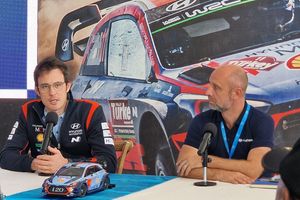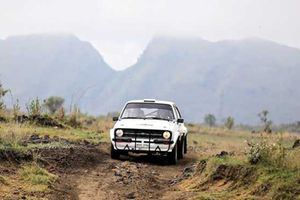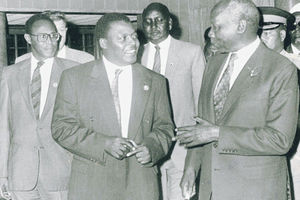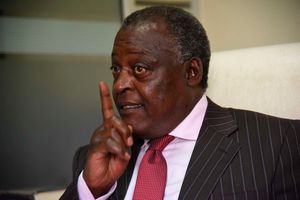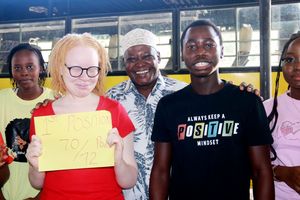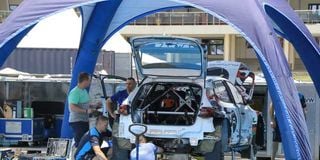
Service men work on Daniel Chwist and Kamil Heller’s Skoda Fabia RS WRC rally car at Naivasha WRC Service Park on March 15, 2025.
The World Rally Championship (WRC) Safari Rally is set to be the first gravel event of the season for non-hybrid Rally1 cars, following revised technical regulations that no longer require factory team cars to carry hybrid plug-in systems.
With the removal of hybrid power, Rally1 cars have reverted to a 380bhp trim, a significant reduction from the 514bhp they previously developed. However, this loss in power has been compensated by an 80kg reduction in weight, making the cars faster despite the lower output.
The Fédération Internationale de l'Automobile (FIA) eliminated the plug-in hybrid requirement last season, reducing the maximum power of Rally1 cars by over 115 brake horsepower.
This change marks a major shift in performance dynamics, given that 115bhp is more than enough to propel most 1600cc sedans.
A key focus ahead of this year’s Safari Rally will be the performance of the new Hankook tyres on Kenya’s notoriously rough gravel roads.
The Safari Rally’s shakedown stage at Sleeping Warrior, a 5km stretch within Nakuru County’s Special Economic Zone, will give drivers a crucial opportunity to test how the new tyres hold up against the abrasive terrain.
The rugged conditions of the Kenyan rally are infamous for destroying tyres and causing punctures, a factor that could significantly impact race strategy.
Toyota Gazoo Racing World Rally Team principal, Jari-Matti Latvala, acknowledged the challenges that lie ahead, especially with the introduction of the new tyre supplier.
“This will also be the first gravel rally with this year’s revised technical rules and the new Hankook tyres, so there will again be some adapting for everyone to do, especially as it’s not possible to test outside of Europe,” he said.
Latvala also expressed confidence in the team’s ability to navigate these changes, emphasizing the role of three-time WRC Safari champion Juha Kankkunen, who will be taking over his duties on the ground.
“They (drivers) can all count on the knowledge of Juha Kankkunen, who will be taking over my duties on the ground for the first time. With his experience on this event, I know that the team is in very good hands, and I will be following our progress closely.”
With teams having used Pirelli tyres for the past three seasons, adapting to Hankook’s rubber presents an added layer of complexity. Two-time world champion Kalle Rovanperä has admitted that he will need to adjust his driving style to accommodate the characteristics of the new tyres.
The transition period has been brief, with drivers expressing concerns about the limited time available for testing. Hankook’s director of motorsport, Manfred Sandbichler, acknowledged these concerns but maintained that this is a common issue in motorsport.
“It doesn’t matter how many kilometres we go for testing, at the end of the day, the result will always be the same: it’s not enough,” he said.
The shakedown stage at 'Sleeping Warrior', located about 7km from Kikopey shopping centre near Gilgil, will take place from 10:01am. Fans will have the chance to watch drivers push their cars to the limit, with some opting for multiple runs to fine-tune their setups.
While no championship points will be awarded, setting the fastest time could serve as a confidence booster ahead of the opening two competitive stages on Thursday at Kasarani Super Special Stage (4.76km) in Nairobi and Mzabibu 1 (8.27km).
Spectators will return to Sleeping Warrior on Friday for the opening stage, Camp Moran 1, which starts at 7:28am and will be repeated in the afternoon. At 31.40km, it is the longest stage of the Safari Rally.
Other key stages include Loldia (19.11km), Kengen Geothermal (13.18km), and Kedong (15.10km), each of which will be repeated twice for a total competitive distance of 157.48km.
As the first gravel event under the new technical rules, the 2025 WRC Safari Rally promises a unique challenge for drivers and teams.
With power reductions, lighter cars, and a switch in tyre suppliers, the rally will test not only the durability of the machines but also the adaptability of the drivers on Kenya’s unforgiving terrain.

